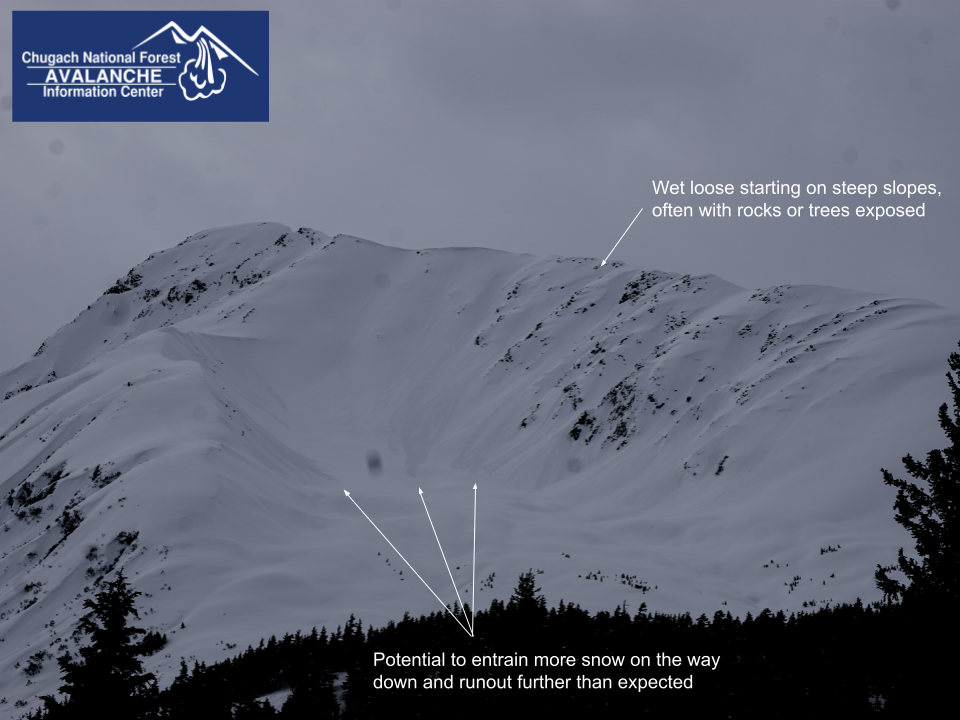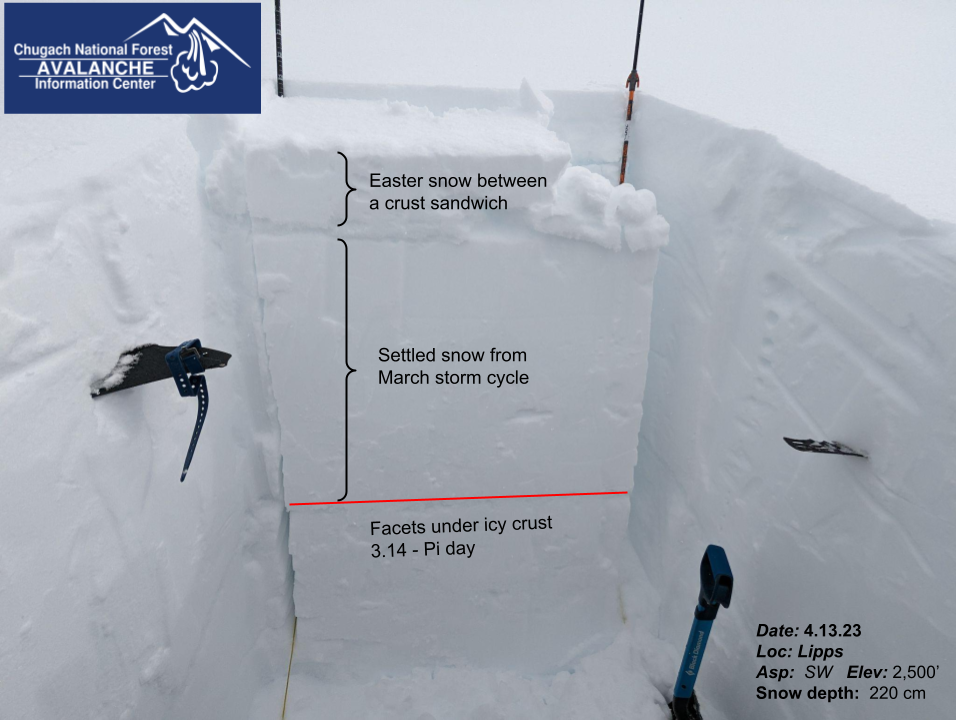Turnagain Pass
|
|
The avalanche danger is MODERATE at all elevations today. Loose wet avalanches releasing naturally as the temperatures increase throughout the day are likely. These are typically small avalanches that occur on steep slopes with wet snow on the surface, but can become large enough to bury a person on larger slopes where the initial avalanche can pick up more snow on it’s way down. Lingering wind slabs up to a foot deep at upper elevations are also possible for human triggering today.
SEWARD: A layer of buried surface hoar has been reported by guiding operations near Seward. Large avalanches releasing on low angle slopes are common for buried surface hoar so extra caution is recommended along with careful snowpack evaluation and terrain selection.
Avalanche Center End of Season Operations: This is our last week of 7 day/week forecasting. Beginning April 17 we will forecast 4 days/week (Tuesday, Thursday, Saturday, Sunday). The final forecast is scheduled for April 30th.
We’re looking for your input! We’ve put together a quick survey about the avalanche forecast that should take 5-10 minutes. If you haven’t yet, please Click here. Big thanks to everyone who has responded!



